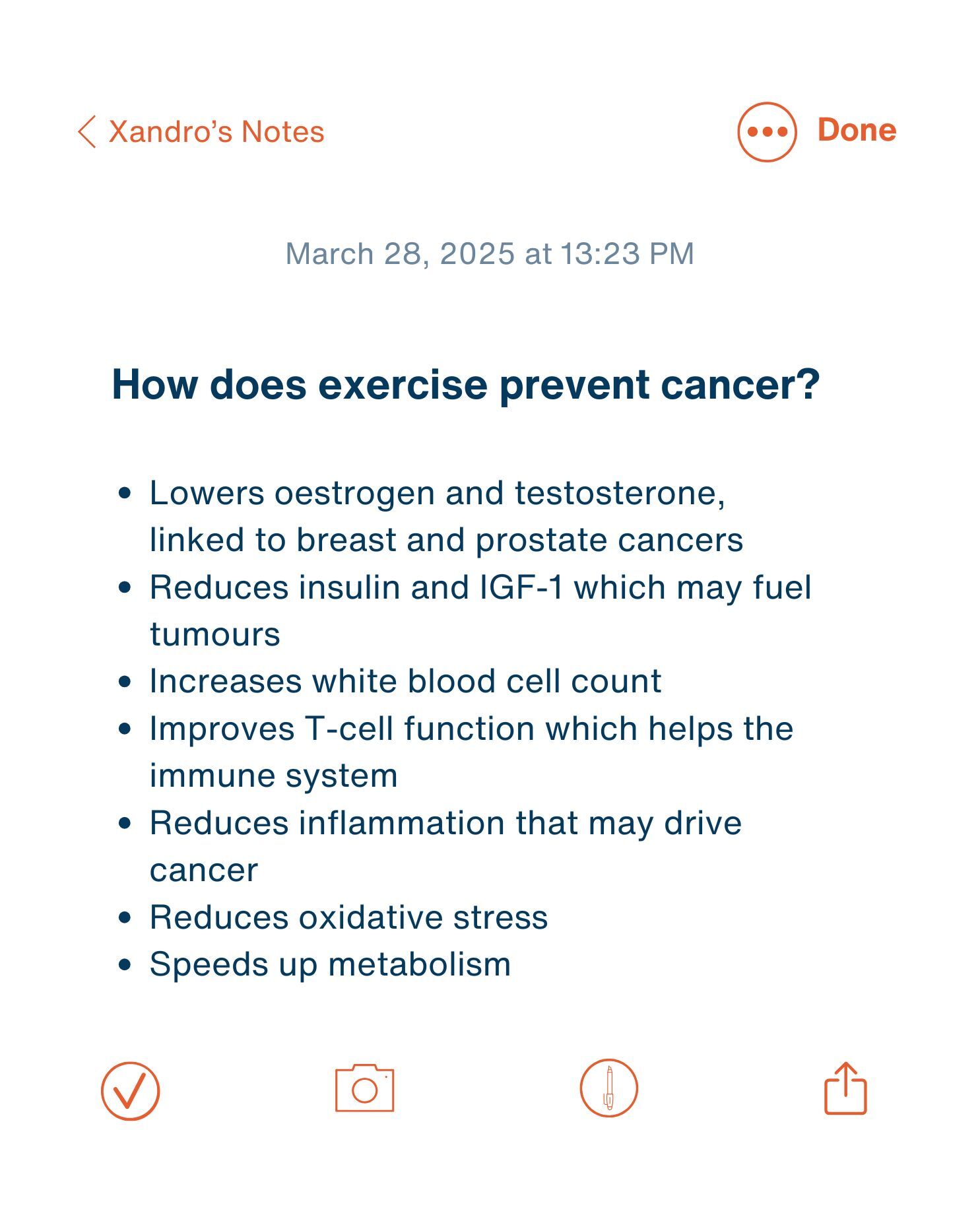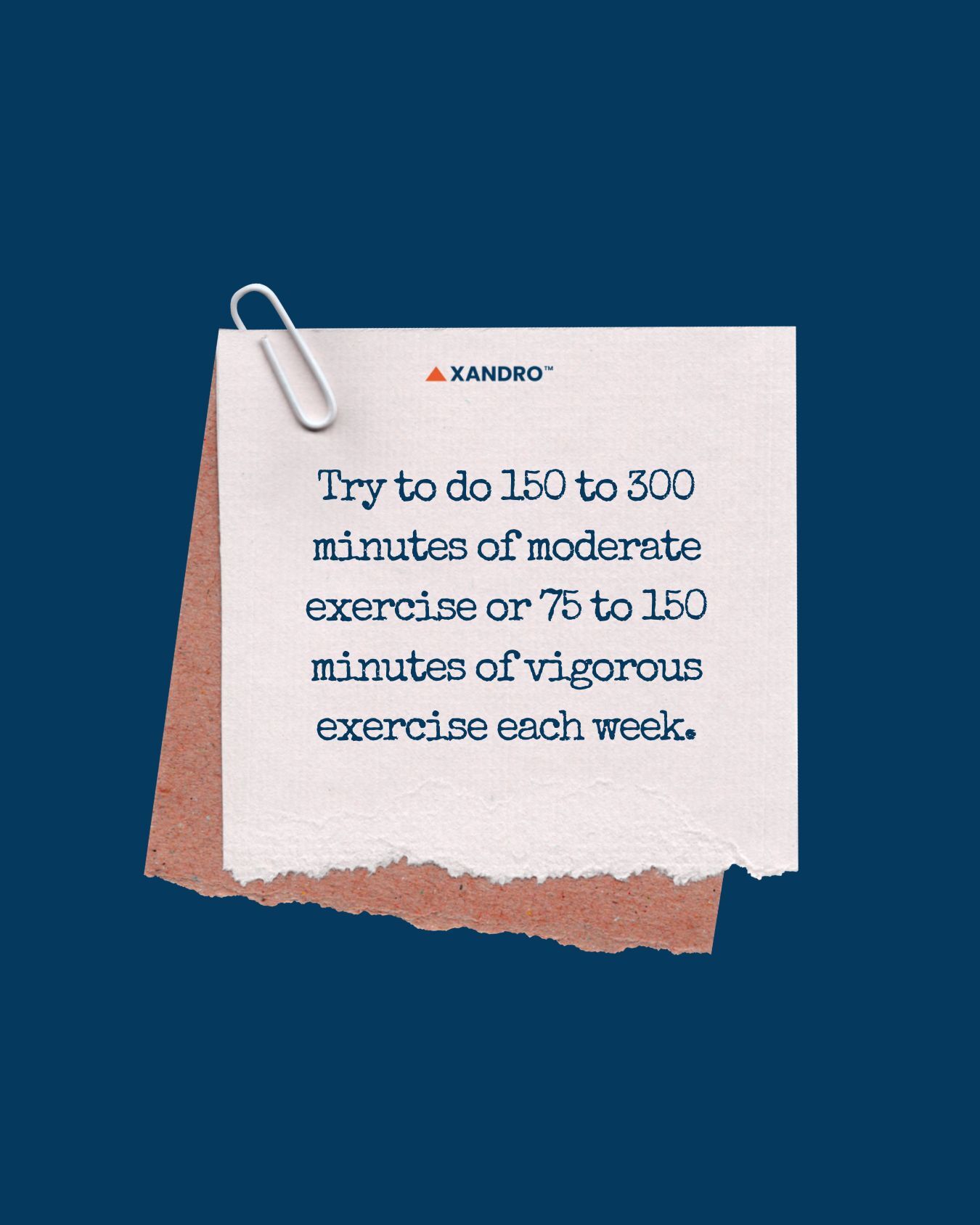Exercise vs. Cancer: Can Staying Active Lower Your Risk & Improve Survival?
7th Apr 2025
Exercise & Cancer: Link, Prevention & Survival Benefits
Cancer remains one of the most devastating diseases globally, but a growing body of research reveals that regular physical activity plays a far more significant role in cancer prevention and survival than previously understood.
But is there a link between exercise and cancer? And if so, how does exercise prevent cancer?
This article dives deep into the science behind exercise and cancer, exploring which cancers are most affected by inactivity, how fitness impacts survival and the best types of exercise for reducing risk.
Head there now:
- Does Exercise Really Lower Cancer Risk?
- What Cancers Are Linked to Physical Inactivity
- How Does Exercise Prevent Cancer?
- Are Fit People More Likely to Survive Cancer?
- Exercise Before Treatment (Prehabilitation)
- Exercise During & After Cancer Treatment
- Best Exercise to Prevent Cancer
- Debunking Myths: Exercise & Cancer
Does Exercise Really Lower Cancer Risk?
Research confirms that physical activity and cancer risk are strongly connected. According to the World Cancer Research Fund, regular exercise can reduce the risk of several cancers by 10 to 50 per cent.
What Cancers Are Linked to Physical Inactivity
Decades of research confirm that a sedentary lifestyle increases the risk of multiple cancers. The strongest evidence relates to:
|
Cancer Type |
Risk Reduction with Exercise |
|
Breast cancer |
6–10 per cent lower risk |
|
Colon cancer |
8–14 per cent lower risk (men) |
|
Endometrial cancer |
10–19 per cent lower risk |
|
Bladder cancer |
15 per cent lower risk |
|
Kidney cancer |
12–23 per cent lower risk |
|
Oesophageal cancer |
21 per cent lower risk |
|
Stomach cancer |
19 per cent lower risk |
|
Lung cancer |
20 per cent lower risk (in former/current smokers) |
While melanoma risk rises in active individuals, this is likely due to sun exposure.
Further Reading: Should Cancer Patients Avoid Vitamin B12 Supplements?
How Does Exercise Prevent Cancer?
Exercise doesn’t just help with weight management; it triggers biological changes that make the body less hospitable to cancer cells:
Hormonal Regulation
- Lowers oestrogen & testosterone (linked to breast & prostate cancers).
- Reduces insulin & IGF-1 (growth factors that fuel tumours).
Immune System Boost
- Increases natural killer (NK) cells – white blood cells that destroy cancer cells.
- Enhances T-cell function – critical for immune surveillance.
Anti-Inflammatory Effects
- Lowers CRP & IL-6 (chronic inflammation drives cancer).
- Reduces oxidative stress (damage to DNA that can trigger mutations).
Metabolic Improvements
- Speeds up gut transit time (less exposure to carcinogens).
- Lowers bile acid secretion (linked to colon cancer).

Are Fit People More Likely to Survive Cancer?
Studies show that cancer patients who exercise have:
- Higher survival rates (up to 50 per cent lower risk of death for breast, colon & prostate cancer)
- Fewer side effects from chemotherapy & radiation
- Better treatment tolerance (less need for dose reductions)
- Lower risk of recurrence
Further Reading: Combining Omega-3 with Vitamin D and Exercise for Ageing
Exercise Before Treatment (Prehabilitation)
‘Prehab’ – preparing the body before cancer treatment – can improve outcomes dramatically. Patients who are fit before treatment:
- Handle chemotherapy & surgery better
- Recover faster, meaning less muscle wasting
- Have stronger immune responses and a better tolerance of side effects like fatigue and nausea
A cancer exercise program before treatment often includes:
|
Exercise Type |
Benefits |
Recommended Dose |
|
Aerobic (e.g., walking, cycling) |
Improves heart/lung function |
3–5x/week, 20–30 mins |
|
Resistance Training |
Preserves muscle mass |
2–3x/week, 8–12 reps |
|
Flexibility (yoga, stretching) |
Maintains mobility |
Daily, 10–15 mins |
Further Reading: The Power of Aerobic Exercise in Weight Loss
Exercise During & After Cancer Treatment During Treatment Many worry that exercise could worsen side effects, but research shows the opposite: A study on breast cancer patients found that those who did resistance training were 3.3 to 5.7 per cent more likely to complete chemotherapy without dose reductions. The best exercises during cancer treatment are: After Treatment (Survivorship) Staying active post-treatment: Yet, it’s estimated that less than 10 per cent of cancer survivors will be active during treatments and only 20 to 30 per cent will be active after treatments. This shows that doctors need to emphasise the importance of exercise and physical activity in cancer survivorship to patients. Best Exercise to Prevent Cancer The gold standard is: More Movement = Greater Protection Which Type is Best? Exercise Type Benefits Aerobic (cardio) Reduces breast & colon cancer risk Strength training Preserves muscle, lowers insulin HIIT (High-Intensity Interval Training) May slow tumour growth Yoga/Pilates Reduces stress & inflammation For maximum benefits: Further Reading: The Role of Exercise in Weight Loss Debunking Myths: Exercise & Cancer ❌ Myth: Cancer patients should rest and avoid exercise. ❌ Myth: Exercise spreads cancer. ❌ Myth: Only intense workouts help. ❌ Myth: If you’re slim, exercise doesn’t matter. End Note Research into cancer and physical activity shows that it’s recommended to move as much as you can and as often as you can when battling cancer. Of course, always be sure to do so under the direct guidance and opinion of your doctor, but whether you’re looking to lower your risk or improve survival odds, exercise is one of the most powerful tools against cancer. To reiterate about exercise and cancer prevention: Take control of your health today by starting an exercise regime. To help, read our anti-ageing exercise routine article or consider taking certain supplements to help your body on your journey. For example, you can take magnesium glycinate to improve muscle recovery and sleep or curcumin to help reduce inflammation.Learn more about your health with Xandro’s blogs!

✅ Fact: Exercise improves recovery and reduces side effects.
✅ Fact: Exercise improves treatment effectiveness by improving blood flow.
✅ Fact: Any movement counts — even walking lowers risk.
✅ Fact: Exercise reduces cancer risk independent of weight loss.
